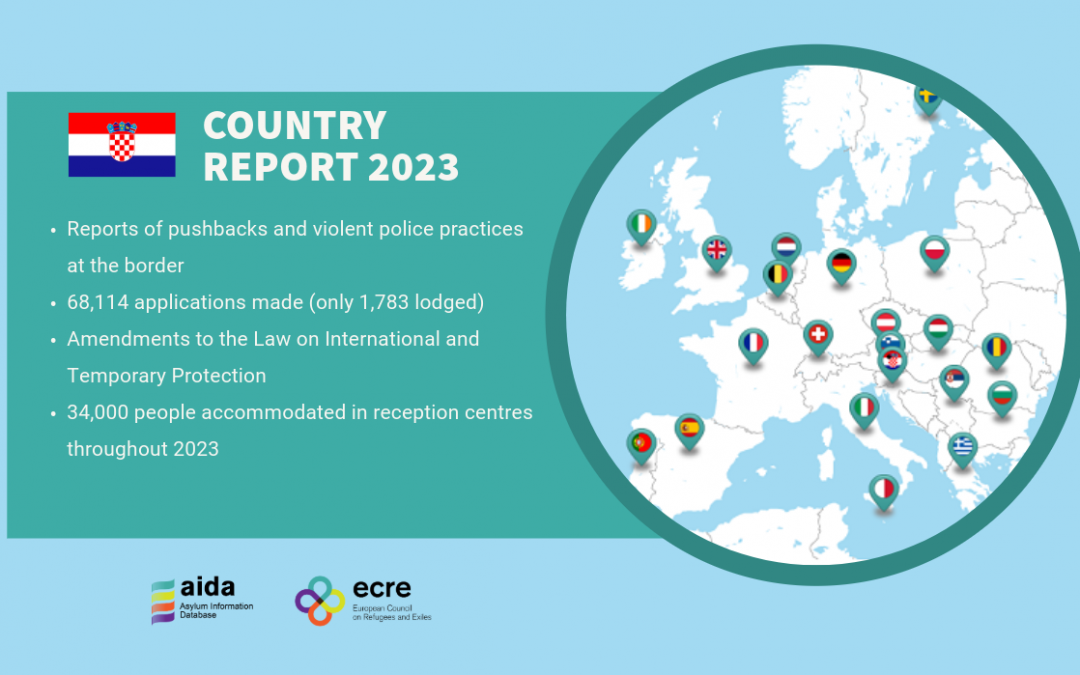The updated AIDA Country Report on Croatia provides a detailed overview of legislative and practice-related developments in asylum procedures, reception conditions, detention of asylum seekers and content of international protection in 2023. It also includes an annex which provides an overview of temporary protection (TP).
Croatia joined the Schengen Area and the Eurozone on 1 January 2023. By 26 March 2023, international airports in Croatia began the full application of the Schengen acquis. Passengers on internal flights (i.e. flights within the Schengen Area) are no longer subject to border controls. However, on 21 October, Slovenia introduced controls on its border with Croatia. These were extended by six months on 22 December.
Reports of pushbacks and violent police practices at the border continued to be documented in 2023. According to the Danish Refugee Council (DRC), there were 3,323 reported pushbacks from Croatia to Bosnia and Herzegovina (BiH). Of them, 825 people reported being denied access to asylum system. (NB/ The DRC also noted that the number of reported pushbacks does not necessarily equate to the number of individuals who were affected as the same person could be pushed back several times). Data from the United Nations Refugee Agency also indicates that 89 people were pushed back from Croatia to Serbia in 2023.
In 2023, there were 68,144 applications for international protection (compared to 12,872 in 2022). More than half (35,992) were made at border police stations. However, only 1,783 applications for international protection were then lodged (1,685 new applications and 98 subsequent). This indicates that Croatia continues to be a transit country for most asylum seekers.
At the end of January 2023, 19,390 people who had been displaced from Ukraine were registered for TP in Croatia. In March 2023, Parliament passed a law to amend the Law on International and Temporary Protection. The amended law, which entered into force on 1 April 2023, introduced a number of important changes to the legislative framework relating to the submission of asylum applications, rules on asylum interviews, strengthening the role of unaccompanied minors’ guardians, broadening the reasons for the restriction of freedom of movement and detention, access to the labour market for asylum seekers and the introduction of humanitarian admission.
More than 34,000 people were accommodated in reception centres for applicants for international protection in Zagreb and Kutina in 2023. According to the Ministry of the Interior, the average length of stay in the reception centres was less than three days and that the largest number of people left the reception centre within 24 hours of their arrival. NGOs reported that the increase in the number of applicants for international protection in 2023 had resulted in capacity issues in the centres and that some applicants had had to sleep in the hallways of the Zagreb centre.
Although the previous Integration Action Plan had expired at the end of 2019, no new plan was adopted in 2023. At the local level, in May 2023, the Zagreb City Assembly adopted a new action plan for the implementation of the Charter of Integrating Cities for 2023 and 2024. The general objective of the new plan is to encourage the integration of applicants for international protection, recipients of international protection or TP, and foreign workers residing in Zagreb, and to contribute to the development of Croatia’s migration policy.
The full report is available here and the annex on temporary protection is available here.
For more information about the AIDA database or to read other AIDA reports, please visit the AIDA website.

